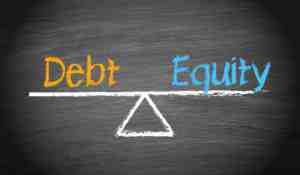

Real estate, once considered an alternative asset class, has become more mainstream in recent years. Investors are increasingly drawn to real estate given its stability in the face of otherwise dramatic market swings. Passive real estate investing also offers tremendous tax benefits, something that institutional investors have known all along.
In this article, we look at the six primary tax benefits of passive real estate investing in multifamily properties
When investing in multifamily properties, depreciation is typically calculated over 27.5 years, which the IRS considers the “useful life” of a residential building. It is considered “straight-line” depreciation when an owner takes an equal fraction of the depreciation each year.
This is effectively a paper loss used to offset actual gains when passive real estate investing. A revenue-generating property could be appreciating in value while being eligible for depreciation. This depreciation helps to lower investors’ tax burden without impacting profits.Here’s a simple example. Let’s say a $34 million property has a land value of $6.5 million, leaving $27.5 million in improvements to be depreciated. Using straight-line depreciation, it yields $1 million in paper losses each year for the next 27.5 years. Equally dividing that depreciation benefit among 50 investors yields a $20,000 paper loss for each passive real estate investor to take against the actual gains from the deal.
In simple terms, here’s what that means for passive real estate investors. Most accredited investors sit in higher income tax brackets. For those individuals, the depreciation recapture rate from multifamily investing is often lower than their tax bracket otherwise. This is known as “tax arbitrage,” a strategy that saves investors money. It’s an additional benefit to the time value of money.
There is a provision in the tax code that allows real estate investors to defer paying capital gains taxes. It is known as the 1031-exchange. The 1031-exchange allows real estate investors to sell an asset and reinvest the proceeds into a like-kind investment, deferring capital gains tax in the process.
This is particularly useful when an investor has owned a property long enough to run out of depreciation. By taking the sales proceeds and investing in multifamily properties again through a 1031-exchange, depreciation will begin all over again, this time, on the new asset. Investors who pay this game in perpetuity can defer paying taxes while collecting cash flow and building equity along the way.
CONCLUSION
As you can see, there are many tax benefits that come along with passive real estate investing in multifamily properties. That said, the barriers to entry can be high and not every investor has the interest or wherewithal to personally own and operate a building. For these reasons, investing in syndication real estate can be a great way to take advantage of the full breadth of tax benefits associated with multifamily investing.
To be sure, every investor’s tax situation will be slightly different based on any number of factors. This overview is intended to be an educational overview of the tax benefits associated with investing in real estate. Any prospective investor will want to consult with their CPA or other tax advisor to discuss how best to leverage these tax saving tools based on their own personal circumstances and tax bracket.
Are you ready to maximize the value of your capital? Contact us today to learn how we leverage various tax-saving tools on behalf of our passive multifamily investors.
With so many investors drawn to multifamily investing, competition for properties is higher than ever. Class A multifamily tends to attract the most interest from institutional buyers given that it…
Next Story →



